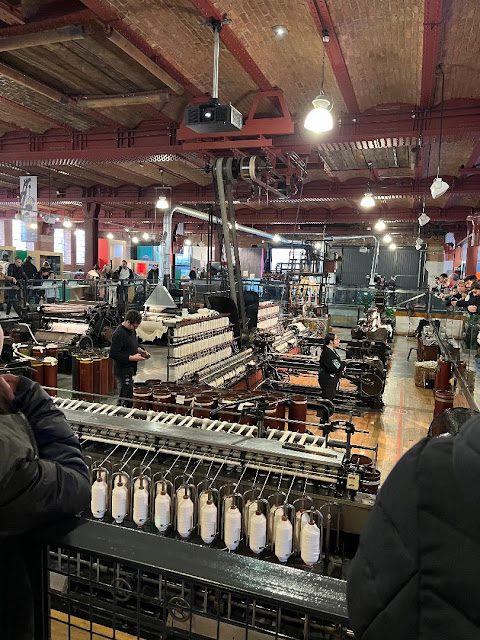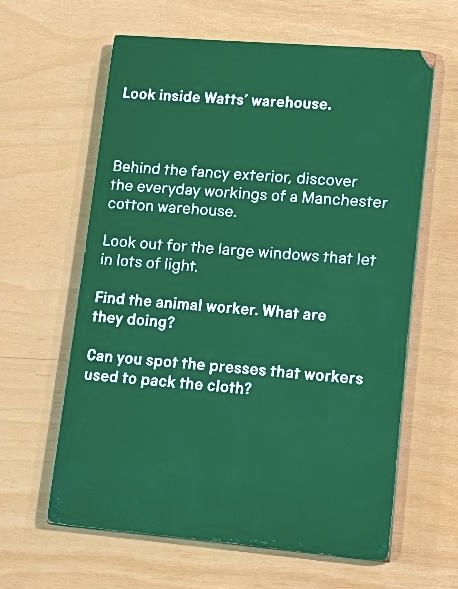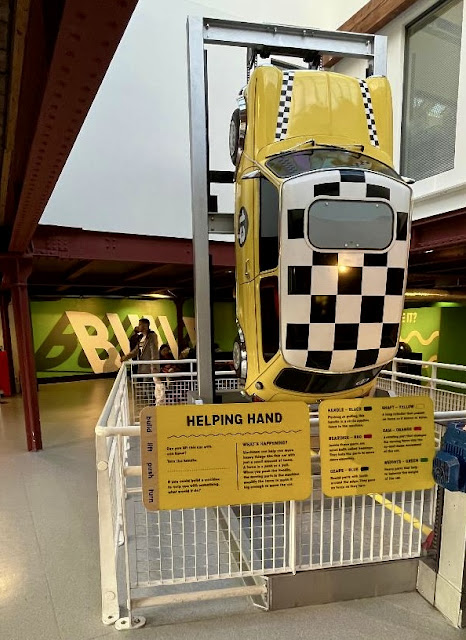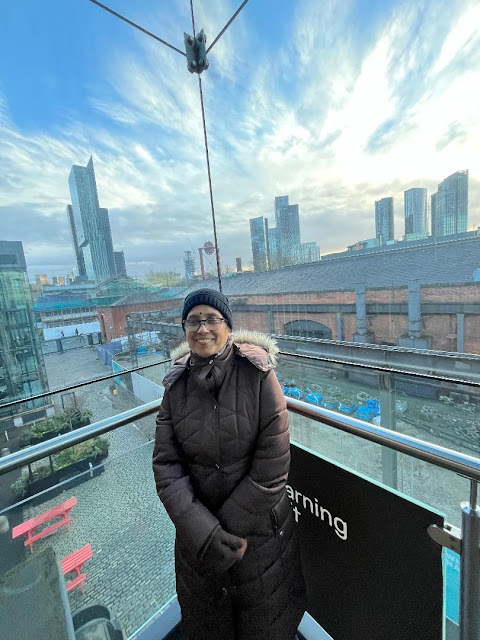28-12-2023 . THURSDAY. MANCHESTER
Got up at 7 .. self-coffee at hotel room itself ..
when switched on TV, a news continuously flashed
“ A small "tornado" tore through Manchester .. Roofs torn off, trees blew down, walls collapsed “
When watched thru window, no vehicles on the road & no people movement.
A total silence, except drizzle and chilly winds.
Bath at 9 .. breakfast at 9:30
Simply resting at hotel room
Since drizzling, umbrellas are for rent.
£2 (₹220) for 48 hours. At Hotel Reception area.
Around 2 in the afternoon, normalcy peeped in.
Awaiting Dinla and her sister at reception.
Walked 10 minutes from Stay to Piccadilly Station bus stop. Took FREE BUS, got down at Museum bus stop.
Science and Industry Museum
Here one can explore 250 years of innovations and ideas that started life in Manchester and went on to change the world.
Museum Map
Manchester's Rolls-Royce
As an important part of Manchester's industrial heritage, one of the first Rolls-Royce motorcars, one of only three remaining cars of this type, is majestically standing in the Museum Gallery.
The Rolls-Royce motor company started life in Manchester. It is the result of a remarkable partnership between Henry Royce, an expert engineer, and Charles Rolls, a motorcar pioneer.
This particular Rolls-Royce was Henry Royce's own vehicle, and it is believed he used it to carry out his duties as a Captain in the Motor Volunteer Corps, before he sold it to an automobile enthusiast, Paris Singer, in 1906.
Selfie with that prestigious motorcar
‘Baby' or SSEM computer
The Manchester Small-Scale Experimental Machine, nicknamed ‘Baby’, was the first computer to store and run a program from memory, just like most computers today. The original Baby computer was built in 1948 at the University of Manchester with technology used in Second World War radar and communications equipment. Baby was just a prototype, but it led to the development of the Ferranti Mark 1, the world’s first commercially available computer.
Replica of the 'Baby' or SSEM computer, was built by the Computer Conservation Society in 1998, using vintage electronic components and with guidance from the original designers, to mark the 50th anniversary of Baby—the world’s first stored-program computer. The original no longer exists, so this is the closest you’ll get to an important piece of computing history, which took place right here in Manchester.
Typesetting Technology …
Seeing the Invisible …
Measuring Molecules …
Engineering …
Here one can explore objects and stories from the engineering collections to discover the dynamic human/engine relationship that developed in Manchester and shapes life today.
Textile Gallery ..
Manchester is built on cotton. The Gallery exhibits the story of the people, places and products that made it and their continuing legacy.
It is split over two levels and a ramp connects the upper & lower levels. Working textile machines are located in the upper level. These historic machines are demonstrated and the visitors can watch from the platform level. There is a glass safety barrier.
In this Gallery, Visitors can find out how cotton shaped Manchester. Here we can explore the city’s relationship with textiles from the Industrial Revolution to till date. Also we can discover the impact of Manchester’s cotton industry has had on lives across the world.
Meet the machines, people and stories that made Manchester the first industrial city and find out how ‘Cottonopolis’ changed the world we all live in today.
Heat Vision ..
The thermal camera that senses heat instead of light.
Our pics on big screen thru thermal camera.
Silent Sound …
We can move around in waves of sound and make music with our bodies.
Infinity Well …
Our Aura …
Some clicks …
Selfie on the Lift …
Selfie near Front Desk …
Please devout time to read fully on this Museum.
Please read every subject. Very informative.
https://www.scienceandindustrymuseum.org.uk




































No comments:
Post a Comment